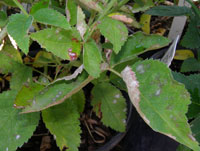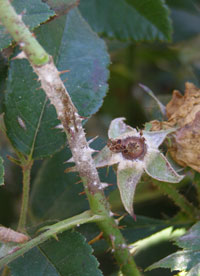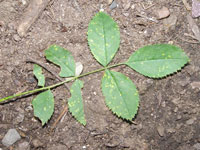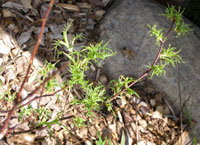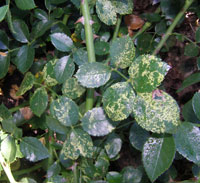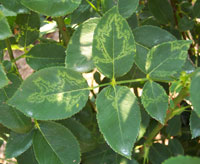Extension > Garden > Diagnose a problem > What's wrong with my plant? > Annuals and Perennials > Roses > Misshapen leaves
Roses > Leaves >Misshapen leaves
1 of 4
Powdery Mildew
Sphaerotheca pannosa
- Powdery white coating on leaves, stems, flower buds and flower stalks
- Leaf tissue may be tinted red around the infection
- Leaves can be twisted or curved at the site of infection
- Infection often most severe on young leaves
- Typically occurs mid to late summer
- More information on powdery mildew
2 of 4
Rust
Phragmidium mucronatum
- Orange raised bumps on underside of leaves
- Twisted or bent leaves, with orange lesions
- Powdery orange spores released from all lesions and spots
- Severely infected leaves may wilt
- More information on rust
3 of 4
Herbicide damage
- Leaves are small narrow and may be twisted
- In spring, leaves emerge in tight clumps and remain small and thin
- Affected leaves eventually turn yellow and die
4 of 4
Virus
Rose Mosaic Virus
- Unusual yellow wavy lines, circles, spots or mottling on leaves
- Symptoms are most obvious in cool weather in spring and fall, may become faint in the heat of summer
- Leaves can be leathery, wrinkled or distorted
- Plants can be stunted or grow poorly



